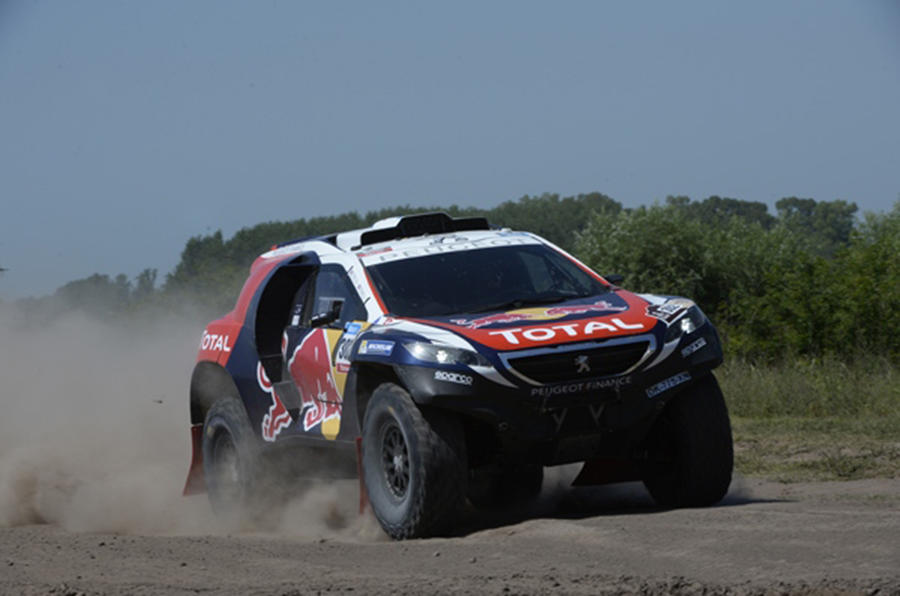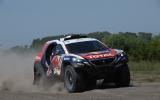You know how a cat prepares to jump on to a fence (or unsuspecting rodent): crouched down with its haunches high in the air? Well, that’s what the Peugeot 2008 DKR looks like, even when it’s standing still.
On paper, Peugeot has it all: a revolutionary new car, the most successful Dakar driver line-up ever and a pedigree on the event that is second to none (thanks to iconic Dakar variants of the 205 T16 and 405 T16).
In reality, though, nothing can be taken for granted. The whole programme was conceived and created in less than a year, and although you could say the same of Peugeot’s successful Pikes Peak project in 2013, that car had to perform at its best for only eight minutes. Or 8min 13.878sec – over 12.4 miles – to be precise.
The Peugeot 2008 DKR has to keep going for 13 days (including two rest days) and more than 5500 miles. So Peugeot has gone directly from tackling the shortest motorsport event in its history to the longest. Whereas the Pikes Peak project was run by a team of 12 people, more than 150 are involved in the Dakar one.
Of those, Stéphane Peterhansel, Carlos Sainz and Cyril Despres will be the ones grabbing the limelight. Peugeot’s three Dakar drivers have a wealth of experience behind them (the youngest man is 40 – again, probably a record for a factory team in modern motorsport, where these days drivers are considered for a race seat shortly after teething), but they could not be more different.
Peterhansel, with the weather-beaten face and flecked stubble of an Arctic explorer, is the most successful driver in Dakar history. He has 11 wins behind him – six on bikes and five in cars – yet he says it is the culmination of his “lifelong dream” to come to Peugeot.
Sainz, from Spain and known as the Matador, is the only non-Frenchman in the squad, with two world rally championships and one Dakar victory (in seven participations) behind him.
He knows that getting back into a factory team is the only sure-fire way to add to that tally – but perhaps not immediately. “I used to have a contract with Volkswagen, but that meant it was only possible to drive privateer buggies on the Dakar,” he explains. “So I decided to finish that and go to Peugeot.”
Finally, there is Despres – the rookie (aged 40). He has five motorbike victories behind him, but this will be his first time in cars. He grew up in a modest family on the outskirts of Paris, and when he was a boy he used to watch the Dakar cars – including those iconic Peugeots of the 1980s and 1990s – making their way south from the capital towards Africa. “I never dared to dream that one day I would be part of it,” he reflects now. “It’s just incredible.”






















































Add your comment